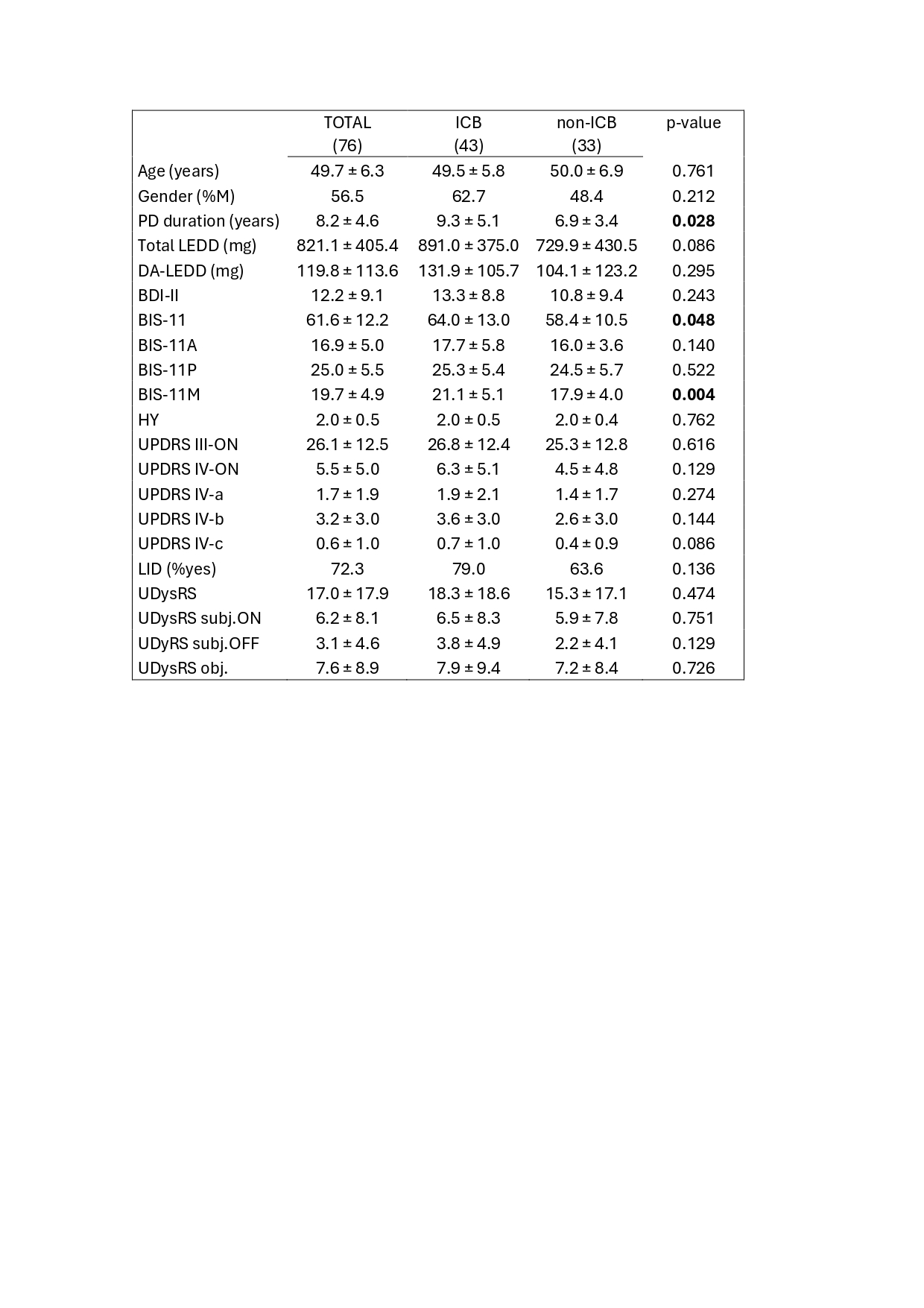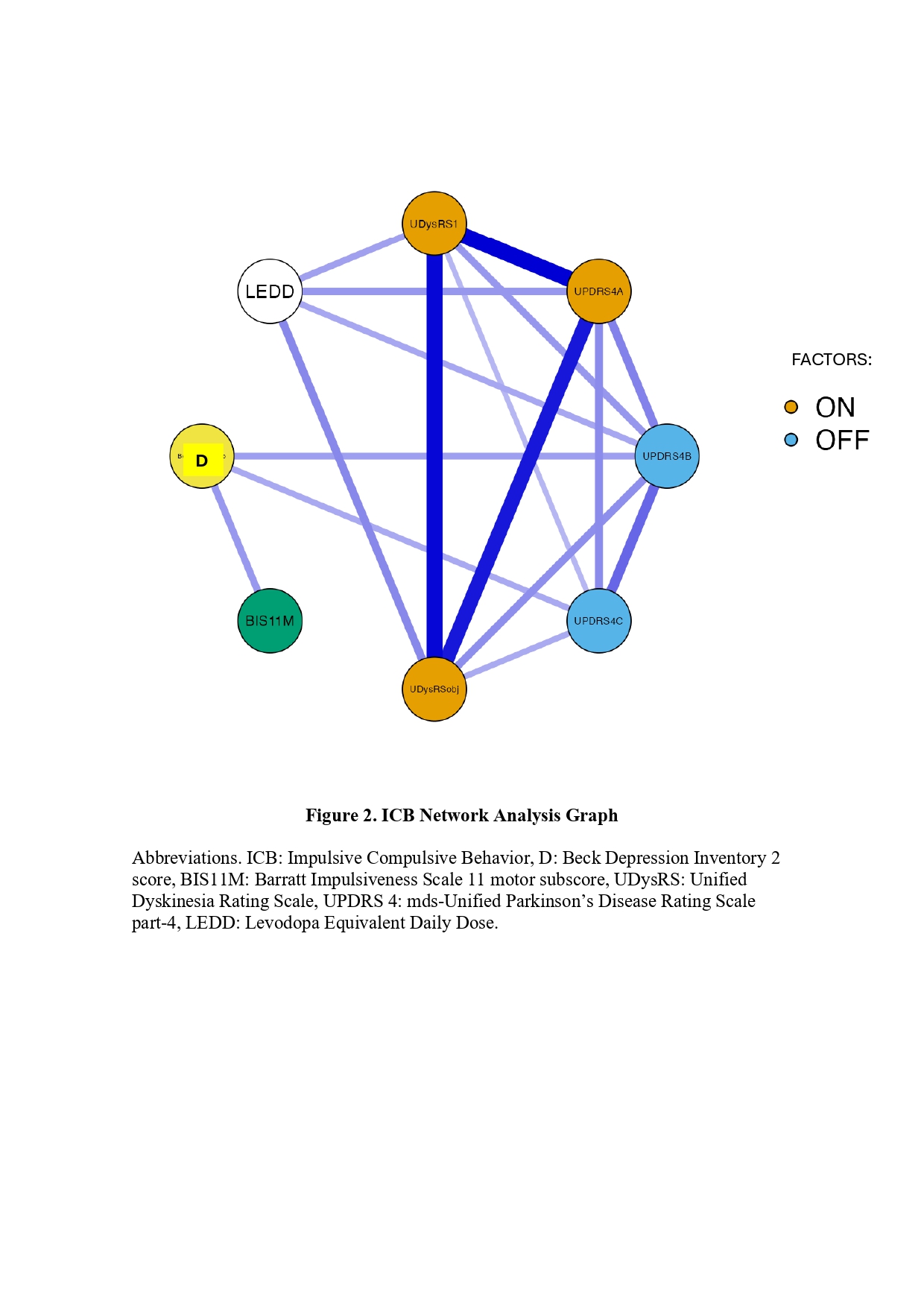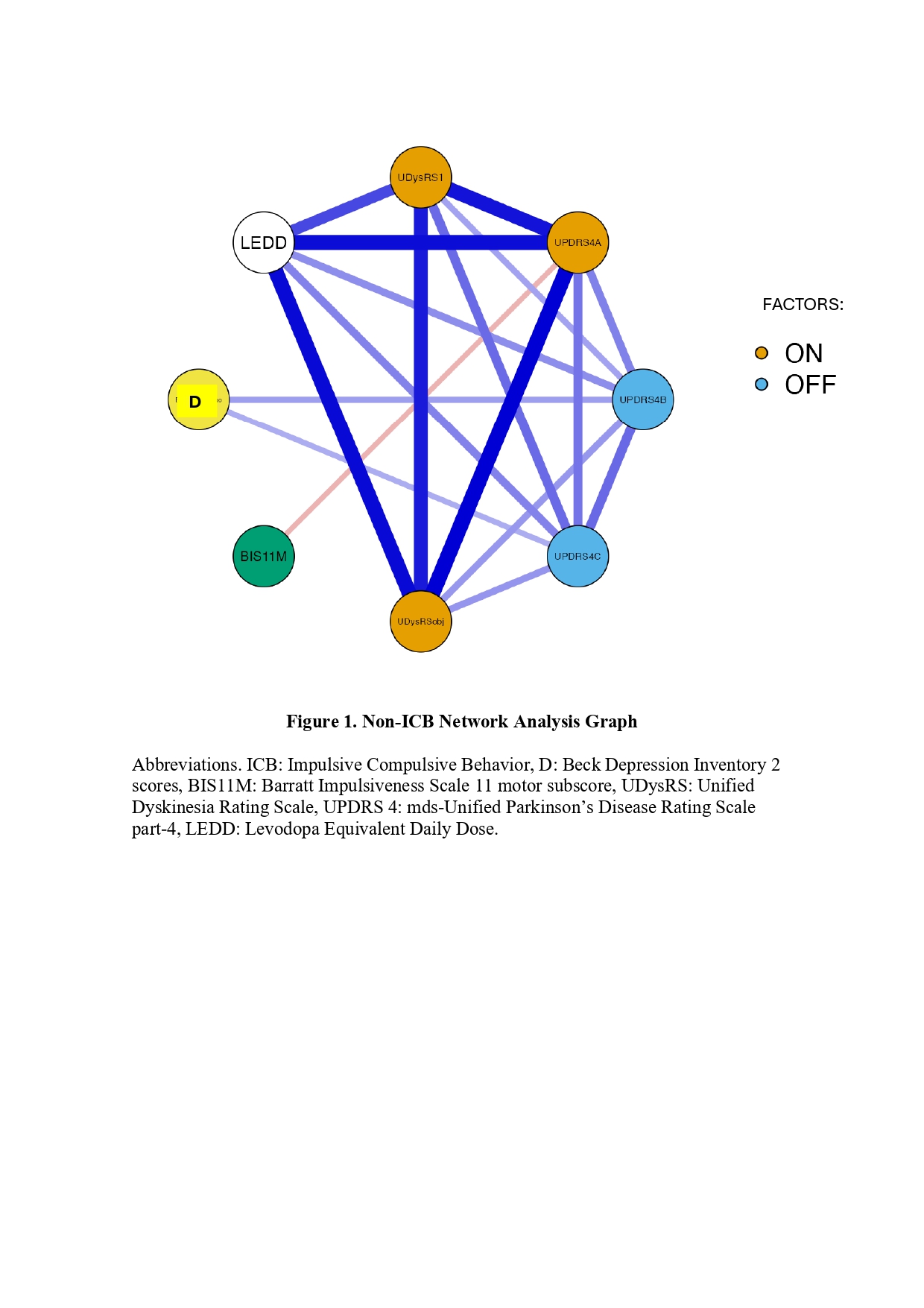Category: Parkinson's Disease: Non-Motor Symptoms
Objective: To study Impulsive Compulsive Behaviors (ICBs) and Levodopa-Induced Dyskinesias (LIDs) in Young Onset Parkinson’s disease (YOPD) patients.
Background: Parkinson’s disease (PD) is a neurodegenerative illness with motor and non-motor symptoms. Dopaminergic drugs such as levodopa and disease progression correlate with LIDs. Dopaminergic agonists, in turn, are associated with increased risk of impulsive-compulsive behaviors (ICBs).Study results on ICBs and LIDs interplay have been controversial.
Method: We performed an observational study from 1 Brazilian center. The exclusion criteria were atypical parkinsonism, Hoehn-Yahr (HY) = or > 4, dementia, and neurological surgery. Beck Depressive Inventory (BDI-II) Questionnaire for Impulsive Compulsive Disorders in Parkinson’s Disease -Current Short (QUIP-CS), Barratt Impulsiveness Scale BIS11, Unified Parkinson’s Disease Rating Scale parts III and IV (UPDRS III e IV), the Unified Dyskinesia Rating Scale (UDysRS), and the Hoehn and Yahr scale (HY) were applied to patients during on-state. ICB patients had at least one positive answer to QUIP-CS. We used T-test with z-score values to continuous variables and chi-square test to categorical variables.To perform a cross-section network analysis split by ICB, we created 2 factors (Kaiser-Meyer-Olkin>0.7). UPDRS IV part A, UDysRS subjective part on, UDysRS objective part composed factor ON, and UPDRS IV part B and C composed factor OFF. We also introduced BDI-II, BIS11M, and LEDD in this network. Pearson’s correlation was the analysis estimator and the lowest sparsity, a quality measure.
Results: 76 YOPD patients were evaluated. 55 had dyskinesia, 43 had at least 1 ICB (20 compulsive buying, 19 binge eating, 19 hobbyism, 14 hypersexuality, 11 punding, 9 gambling, 9 DDS. Table1 illustrates group differences. At least 1 ICB was not associated with dyskinesia (p=0.136), but more than 1 ICB were associated with higher UDysRS total score (p=0.026). Network analysis showed differences based on ICB (Fig 1 and 2). ICB graph demonstrated robust paths only in on-state factor (on-dyskinesia scores) and motor impulsivity, correlated with depressive symptoms (p=0.015).
Conclusion: Higher LID scores were associated with patients with more than 1 ICB. Depressive symptoms correlated with the off-state, which can be explained by a higher perception of the off-state in both groups, and with BIS11M just in the ICB group.
Table 1. Demographic and Clinical Data
Figure1. ICB Network Analysis Graph
Figure 2. Non-ICB Network Analysis Graph
To cite this abstract in AMA style:
B. Veiga, C. Silva, S. Silva, R. Saba, H. Ferraz, V. Borges. A Network Analysis shows How Impulsive-Compulsive Behaviors correlates with Levodopa-Induced Dyskinesia [abstract]. Mov Disord. 2024; 39 (suppl 1). https://www.mdsabstracts.org/abstract/a-network-analysis-shows-how-impulsive-compulsive-behaviors-correlates-with-levodopa-induced-dyskinesia/. Accessed December 18, 2025.« Back to 2024 International Congress
MDS Abstracts - https://www.mdsabstracts.org/abstract/a-network-analysis-shows-how-impulsive-compulsive-behaviors-correlates-with-levodopa-induced-dyskinesia/



